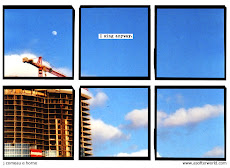While living with the Dominicans, I met many sisters and heard about the lives of many more. Famous nuclear disarmament demonstrators. Ministers on death row. Starters of low-income pharmacies, inner-city arts academies, women studies departments. Directors of affordable housing and community media centers. Dreamers and doers.
But one of the most remarkable women I met was Sr. JoAn. She was the strangest Catholic I had ever encountered. And she was like me.
Sr. JoAn graciously served as my spiritual director for three months this past fall. She spoke to me from her 78 years of wisdom—about mindfulness, centering, and the inclusiveness of God—and she listened. One week, we probably only exchanged five or six sentences. The rest of our time together, we spent in silence. It was the most supportive, peace-giving hour I have ever experienced.
The first time I walked into Sr. JoAn’s office, I asked her about a painting of Jesus she had on the wall. I’d heard that she was somewhat of a radical, and I was disappointed to see the traditional blue-eyed, sandy-haired representation of Christ in her domain. “Tell me about this Jesus,” I said. It was a challenge.
“They call him ‘the smiling Jesus,’” she said. And I saw him. Not stretched out on the cross, succumbed to the violence in the world, but alive, overcoming it. Not judging the world for its shortcomings, but welcoming everyone in the human family.
Sr. JoAn passed away a few weeks ago after a sudden complications from a stroke and an infection in her heart. She was a no-nonsense kind of person, and far from self important, so she probably would have pooh-poohed the overwhelming heartbreak it caused me to see her go. It was devastating loss of all she represented to me—the solidarity of someone who understood me, an ear I could turn to after a debate with a friend about the “gender” of God, hope of a home for my reckless heart.
The Dominicans had given me a home, but only a temporary one. I knew I could not enter “the sisterhood,” even if I wanted to, as a non-Catholic. And I knew that I would never be able to sacrifice my freedom to a hierarchical church in order to become Catholic, no matter how liberating the underground doctrine of its women religious might be. After Sr. JoAn died, I laid in the grass next to the convent I could not call home and wept, feeling more alone than ever.
Belonging has always been important—and difficult—for me. It’s something all of us desire. For me, it’s especially important to belong to some kind of community. Living in community with the sisters has made me question the merits of the societal norm of building our lives around a population of two. Wives, husbands, families can be supportive partners through whom life is multiplied and flows out to serve the world. But if we focus all our love into one other person, the rest of the world misses out. And we miss out on getting to know the rest of the world, on being part of a global community and an ancient human family.
During Sr. JoAn’s remembrance service, the words of a hymn we were singing became her words, and I realized that she was still with me, turning over a little piece of her legacy. As I let her body go, her spirit came to me and sent me to continue on my journey. She whispers,
Go forth in truth and beauty
to love and serve the world.
Famous Cottage Gardens Daylilies Ideas
2 years ago

No comments:
Post a Comment